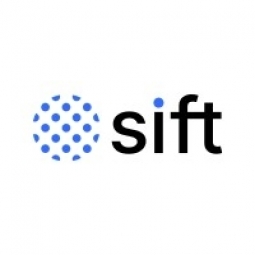Customer Company Size
Large Corporate
Region
- Asia
Country
- Indonesia
- Malaysia
- Philippines
- Singapore
- Thailand
- Vietnam
Product
- Sift
Tech Stack
- Machine Learning
- Big Data
Implementation Scale
- Enterprise-wide Deployment
Impact Metrics
- Customer Satisfaction
- Brand Awareness
Technology Category
- Analytics & Modeling - Machine Learning
- Analytics & Modeling - Big Data Analytics
Applicable Functions
- Sales & Marketing
- Business Operation
Use Cases
- Fraud Detection
Services
- Data Science Services
About The Customer
Traveloka is a Jakarta-based company that operates Indonesia’s number one platform for booking flights and getting great deals on hotels. With an ever-growing number of visitors to the site, this company has grown to offices in Thailand, Malaysia, Singapore, Vietnam, and the Philippines. Traveloka’s business is booming in the Southeast Asian market and – following on the heels of legitimate customers – fraudsters are creeping into the fold. As a Sift customer, Traveloka’s volume of fraud is miniscule, and the Traveloka team is committed to keeping that fraud rate low.
The Challenge
Traveloka, a leading platform for booking flights and hotels in Southeast Asia, was facing two main types of abuse: payment fraud from stolen credit cards and account takeover (ATO) from stolen credentials and social engineering schemes. Both these problems led to financial loss and, more importantly, damaged user trust and brand reputation. Traveloka had an internal team dedicated to fraud and risk, developing a series of elaborate fraud rules that attempted to provide an automated first screening of all orders. However, as the range of customers on the site changed, Traveloka’s rules-based system couldn’t keep up. They experienced many false positives that were blocking good customers and their orders, leading to poor customer experience. On the ATO side, static rules were missing a lot of cases, weren’t able to adapt quickly enough to emerging trends, and resulted in a lot of false positives, blocking legitimate users from accessing the site.
The Solution
Traveloka began investigating machine-learning based solutions to replace their rules-based system. Big data was already an integral part of Traveloka’s customer service, marketing, and fraud operations. And now the product team – headed by Wayan Perdana – was tasked with finding an adaptive solution that reduced false positives, identified more ATO incidents, and could increase conversions. He turned to Sift because of its sophisticated machine learning platform that scales with growth, adapts to new fraud patterns, and accurately separates good users from bad. Traveloka integrated with Sift to detect both types of fraud. Traveloka has two separate, custom machine learning models that leverage behavioral data – one for payment abuse and the second for ATO – to identify suspicious cases.
Operational Impact
Quantitative Benefit

Case Study missing?
Start adding your own!
Register with your work email and create a new case study profile for your business.
Related Case Studies.

Case Study
Largest Production Deployment of AI and IoT Applications
To increase efficiency, develop new services, and spread a digital culture across the organization, Enel is executing an enterprise-wide digitalization strategy. Central to achieving the Fortune 100 company’s goals is the large-scale deployment of the C3 AI Suite and applications. Enel operates the world’s largest enterprise IoT system with 20 million smart meters across Italy and Spain.

Case Study
KeyBank's Digital Transformation with Confluent's Data in Motion
KeyBank, one of the nation's largest bank-based financial services companies, embarked on a national digital bank initiative following the acquisition of Laurel Road, a digital consumer lending business. The initiative aimed to build a digital bank focused on healthcare professionals looking to refinance student loans and buy homes. A significant challenge was reducing the time to market for new products by democratizing data and decoupling systems across the IT landscape. Like many large enterprises, KeyBank had a variety of vendor applications, custom applications, and other systems that were tightly coupled to one another. New projects often required developing specific point-to-point integrations for exchanging data, which did not address the needs of other downstream systems that could benefit from the same data.
Case Study
BharatPe: Leveraging Google Cloud for Enhanced Data Analytics and AI to Promote Digital Payments
BharatPe, a fintech company founded in 2018, aimed to make digital payments more accessible for over 10 million small offline merchants and kirana store owners in India. However, the company faced challenges in managing the massive amounts of data generated daily from payment processing to business analysis. Prior to using Google Cloud, BharatPe managed its legacy data warehouse with limited capacity to run a large number of queries. The company ran key performance indicator (KPI) reports, without the ability to understand real-time data patterns. Loading three months of data for quarterly reports took more than 30 minutes on the legacy system, and in some cases, queries failed because the system could not scale to support analytical needs. Additionally, BharatPe operates in a multi-cloud environment for disaster recovery and needed a data platform that could run queries against data, regardless of where it resides.
Case Study
Barclays Enhances Customer Experience with IBM BPM Solution
Barclays, a global bank operating in over 50 countries and serving nearly 60 million customers, faced a significant challenge in improving and streamlining the customer experience. The bank's relationships with customers were multifaceted, with customers engaging with the bank through various channels such as mobile, online, and branch locations. The bank had identified 400 different customer journeys, and the challenge was to align these across the enterprise and improve them in a way that positively impacted customers quickly. The director of operations at Barclays, Mike Gamble, recognized the need to transform the bank's processes around customer journeys. He aimed to enhance the understanding of how various functions contribute to delivering customer experiences and then expedite the rollout time of these new processes to achieve the end goal for the customer.
Case Study
Bank BRI: Revolutionizing Financial Inclusion in Asia with Digital Banking
Bank Rakyat Indonesia (Bank BRI), one of the largest banks in Indonesia, was faced with the challenge of increasing financial inclusion among unbanked Indonesians. The bank had an ambitious target of having 84 percent of Indonesians participating in the banking system by 2022. However, the bank's legacy technologies were proving to be a hindrance in achieving this goal. Each of the bank's products had their own public APIs, which were difficult to manage, secure, and monetize. Additionally, the process of onboarding new partners using host-to-host and VPN technology was time-consuming, taking up to six months. The bank also faced the challenge of reaching a largely rural population, with an estimated $8.3 billion in currency being held outside the banking system.
Case Study
Stabilizing an Avalanche of Data: Comcast's Journey with Data360 Analyze
Comcast Corporation, the second largest broadcasting and cable television company in the world by revenue, was facing significant challenges due to the volume and variety of operational and billing data. With over 20 million customers across 40 states, the company needed to establish standardized processes and automate data flows to overcome a wide range of billing, finance, compliance, supply chain, and marketing challenges. In 2009, the company was dealing with massive amounts of data that were causing major revenue assurance challenges. The customer billing review interface required the processing of a billion records every month, within very tight timeframes. The company’s decentralized accounting and finance operations, with 20 different regions and 30 different accounting practices, further compounded these issues.







